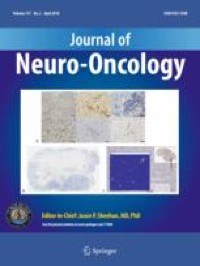Abstract
Objective
In 2018, cIMPACT-NOW update 3 concluded that WHO grade II/III IDH-wildtype diffuse astrocytomas that contain TERT promoter mutations, chromosome 7 gain/10 loss, and/or EGFR amplification, correspond to a WHO grade IV diagnosis and should be classified as Diffuse astrocytic glioma, IDH-wildtype, with molecular features of glioblastoma, WHO grade IV (DAG-G). We present a single-institution series of patients with DAG-G and IDH-mutant astrocytomas and compare their clinical, molecular, and radiographic characteristics.
Methods
Patient data was retrospectively extracted from the EMR for all patients undergoing surgical biopsy/resection of a diffuse astrocytoma at our institution from 2018 to 2020. Clinical presentation, molecular alterations, radiographic appearance, surgery, and survival were reviewed for each patient.
Results
Six DAG-G patients were identified in our cohort. All patients had diffuse disease, and presented with expansile, T2 hyperintense lesions with minimal enhancement. Compared to patients with classic IDH-mutant astrocytomas, mean age for DAG-G patients was older (68 vs 33 years, p < 0.0001), tumors were more diffuse (p = 0.02), with patients more likely to present with focal deficits and receive a biopsy only (p = 0.005). Overall survival was significantly shorter for DAG-G patients (p = 0.03).
Conclusion
Patients with DAG-G are more likely to be older than typical IDH-mutant diffuse astrocytoma patients. They are more likely to present with tumors in a diffuse pattern with focal deficits. When such patients are encountered, prompt biopsy/resection to confirm the diagnosis and immediate initiation of adjuvant therapy is recommended, as the disease progression and overall prognosis is similar to glioblastoma.






